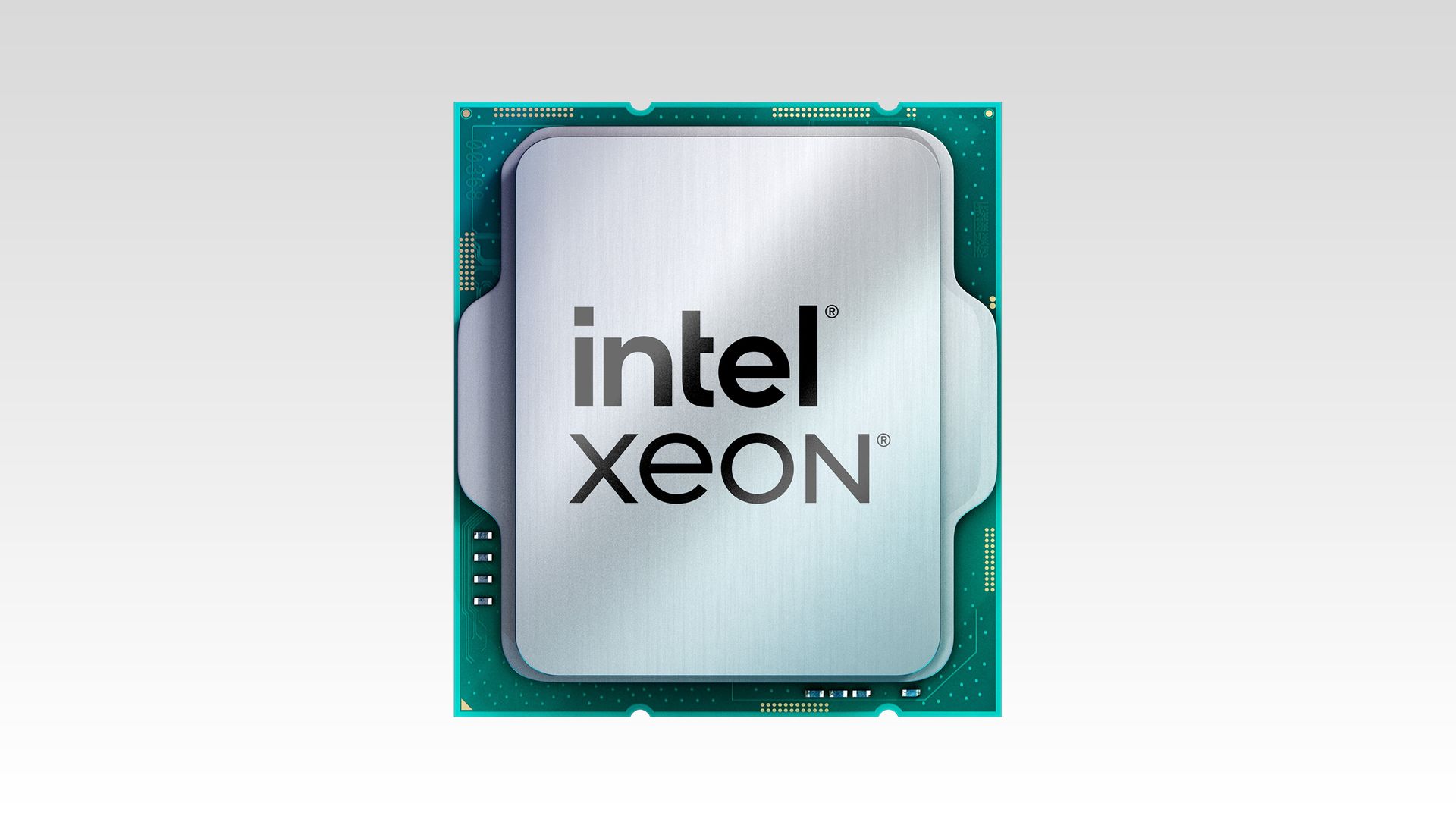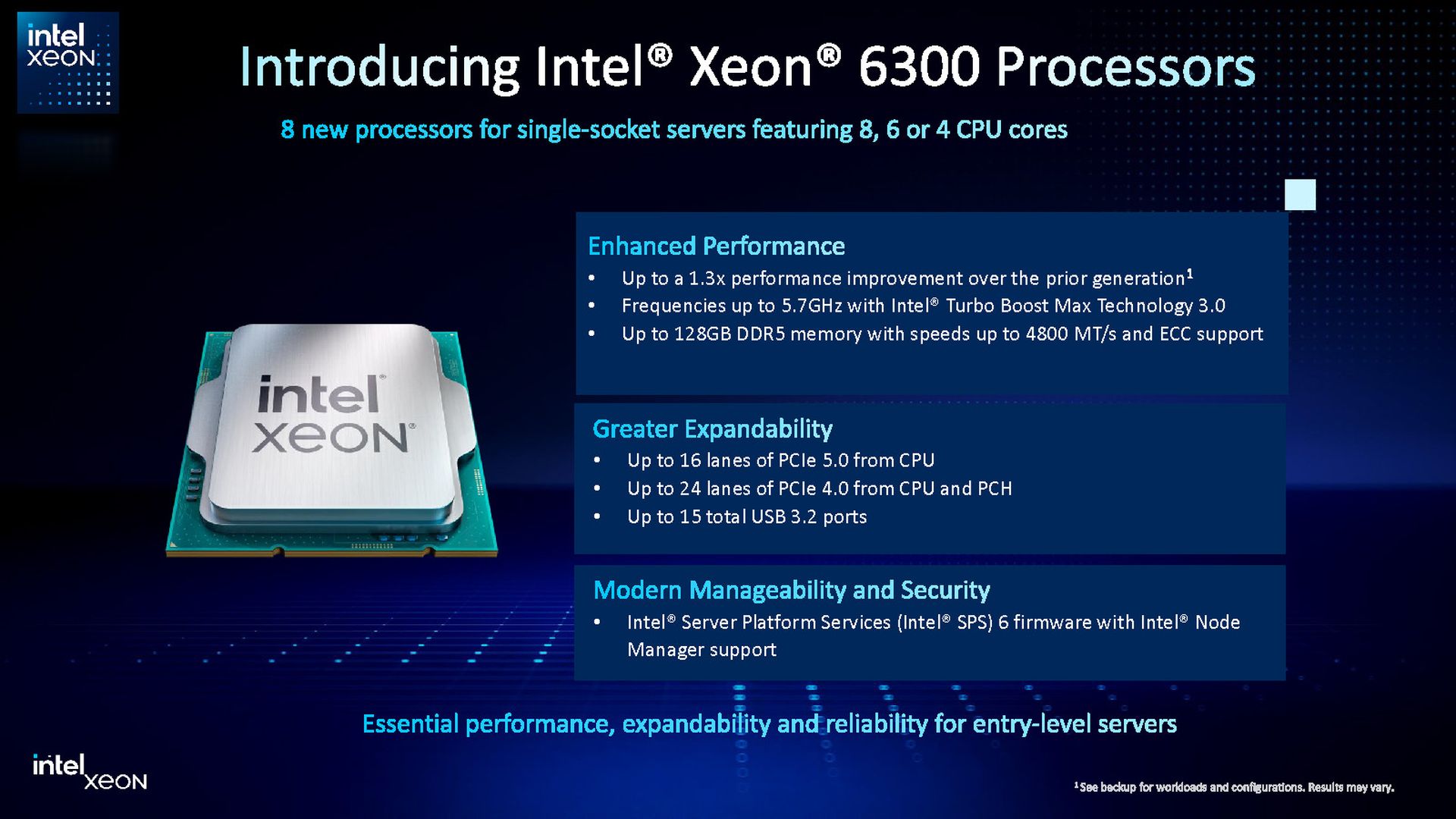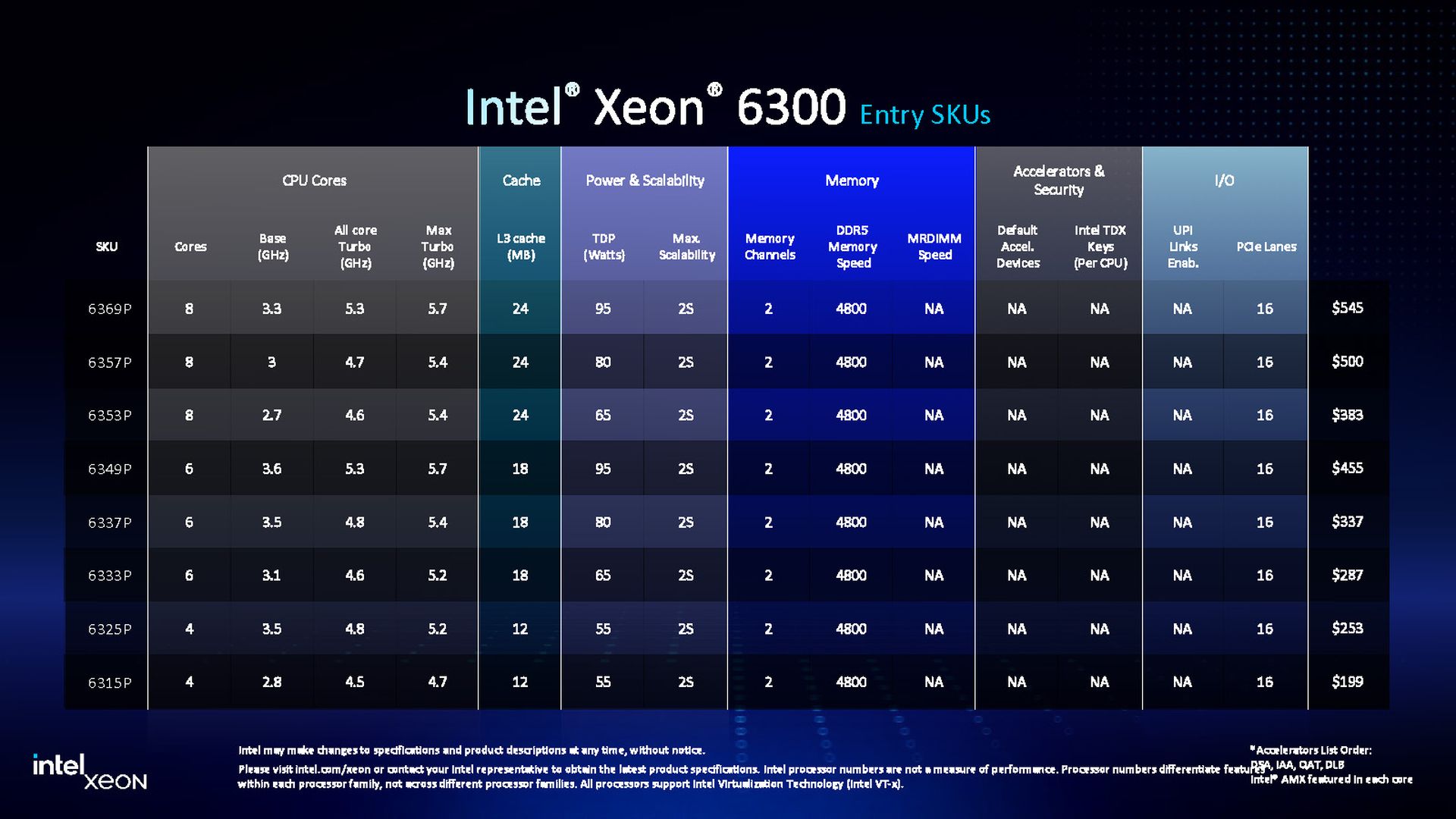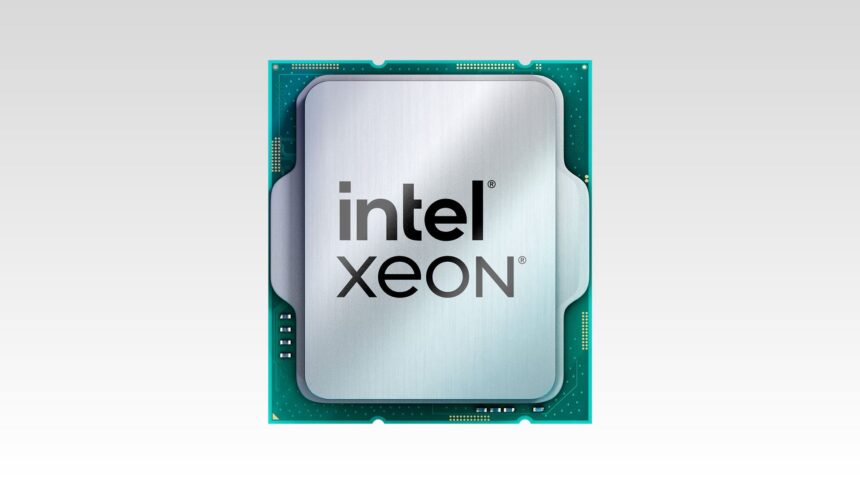
Intel has launched its Xeon 6300 series, with the top model being the 8-core Xeon 6369P priced at $545 USD. This series follows the long-awaited rollout of the Xeon 6700P and Xeon 6500P processors, which are designed for the smaller Socket E2 (LGA4710-2) configuration, in contrast to the larger Socket systems like the Xeon 6900P series.
Intel launches Xeon 6300 series with competitive pricing and advanced features
The Intel Xeon 6700P, recognized for its R1S mode, delivers a single-socket platform with an impressive 136 PCIe Gen5 lanes. This platform is aimed at optimizing performance for storage solutions and various applications. The Xeon 6700P utilizes the Granite Rapids P-core architecture, showcasing similarities to the 6900P series but within a more compact platform.
Intel cashes out? What Silver Lake’s Altera buyout means for investors
Single-socket configurations are now supported via lower-priced SKUs, which includes 8-channel DDR5 memory support. The higher-end models also provide access to advanced memory technologies such as MCRDIMMs and MRDIMMs. Furthermore, Intel is repurposing UPI links for these PCIe lanes in a move to enhance connectivity options.

The design features of the Xeon 6781P, as seen in Supermicro servers, allow for flexible NUMA configurations, supporting up to two NUMA nodes or a single NUMA domain. The architecture also illustrates an increase in cache capabilities, showing a significant improvement in cache distribution. The new design offers 4.2MB of L3 cache and 2MB of L2 cache per core in the 80-core variants, which is substantially greater than the cache provided in earlier Xeon versions.
These new P-core Xeons are primarily targeted at data center workloads instead of high-performance computing (HPC) or artificial intelligence (AI) tasks. The new series is designed to support virtualization, storage, and large multi-socket database configurations, emphasizing Intel’s focus on mainstream data center applications.

Pricing and market positioning
Intel’s latest pricing strategy appears to undercut competitors, especially against AMD’s fifth-generation EPYC processors. By directly comparing the launch prices of the Xeon 6 series with AMD’s offerings, Intel aims to enhance its appeal in specific markets while retaining premium pricing on its high-end four and eight-socket configurations, where it faces no competition.
Intel has reported that pricing for its flagship 6900P series has already been reduced by an average of $4,181 since their introduction in September. The costs have been revised as a response to market competition, notably since AMD’s offerings were priced more favorably for comparable core counts.
The Xeon 6300 series further extends Intel’s product range with entry-level processors available in four, six, and eight-core configurations. They feature clock speeds up to 5.7 GHz but are limited to two DDR5 memory channels, reminiscent of AMD’s lower-tier EPYC products.
Moreover, a new SoC variant designed for embedded systems is being introduced, supporting various applications like edge computing and virtualized radio access networks (vRAN), and featuring capabilities for cryptographic acceleration and AI.
Intel’s elusive 288-core E-core Xeon, previously highlighted by CEO Pat Gelsinger, is now in production and used by cloud service providers, focusing on power efficiency for web-scale applications.
Featured image credit: Intel





